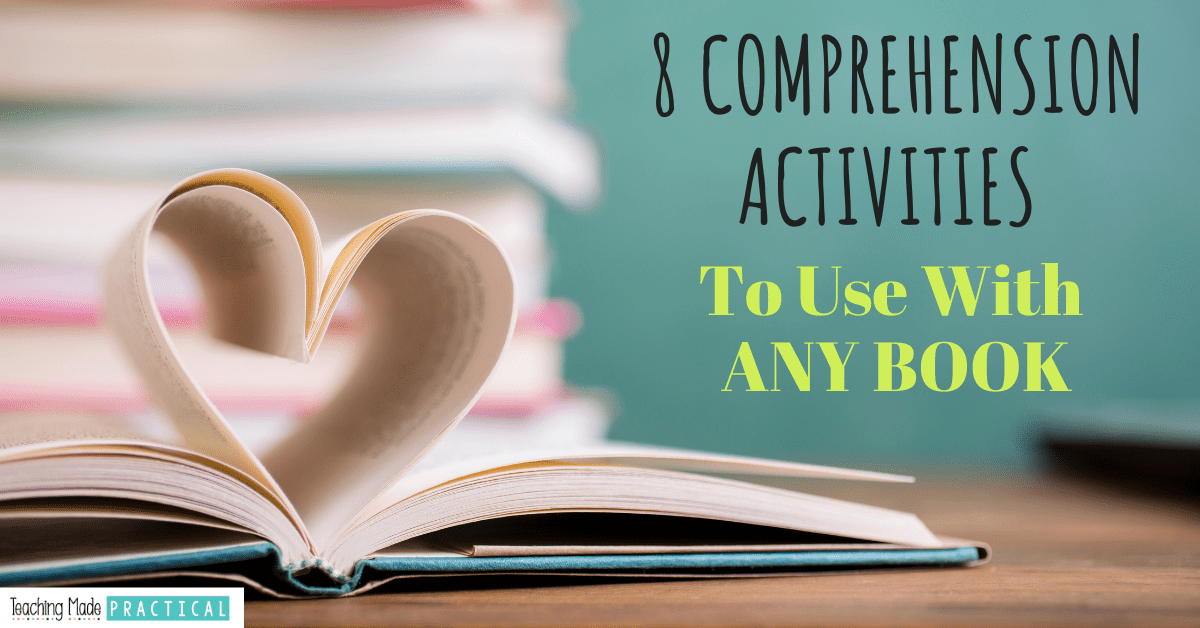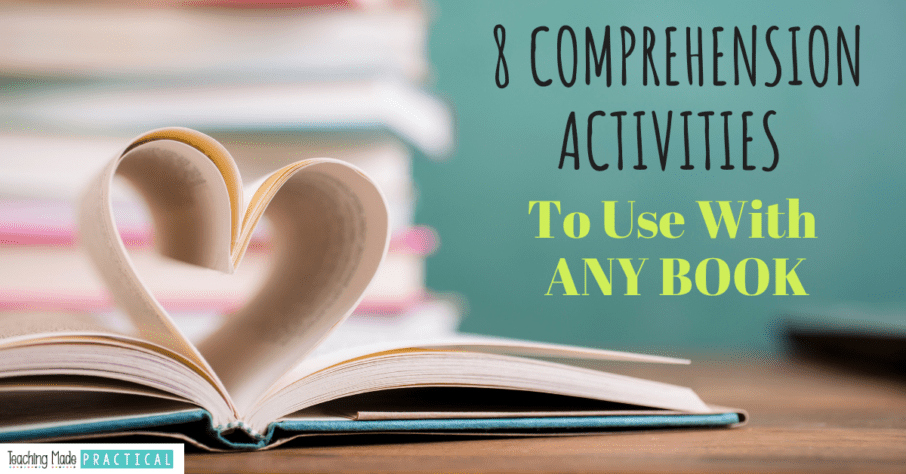
3rd, 4th, and 5th grade classroom teachers read a LOT of books and texts together, and assessing student comprehension is an important part of that. But completing the same comprehension activities can be boring, predictable, and un-rigorous.
Below, find 8 reading comprehension activities that can be used with any book, fiction or nonfiction. And most of them are no prep or low prep!
Comprehension Activity Ideas To Use With Any Text
1. Before, During, and After Reading Comprehension Questions
Asking comprehension questions is always a good way to assess your students' understanding of a text. Being intentional about asking questions before, during, and after reading is even better.
Asking questions before and during reading gives upper elementary students a chance to make inferences, make predictions, and monitor their comprehension.
Check out these before, during, and after questions and activities for ideas.
2. Have A Snowball Fight
Paper snowball fights are always a fun way to assess for student understanding while also allowing students to use up some of their energy.
These do require a little advanced planning, but they can be done with minimal prep work depending on you set them up!
Check out these tips for having a paper snowball fight that will help you assess student comprehension.
3. Complete a One Pager Activity
One pagers are a low prep activity that allows you to check for student understanding while giving your students a little creative freedom.
In a one pager activity, students are given one sheet of paper and some guidelines for responding to the text. You can ask students to include quotes, illustrations, questions, thoughts, and more as a response to the book they read. They fill up the page with these ideas.
Make sure to provide 3rd, 4th, and 5th grade students with a rubric or very specific directions so that they know exactly what is expected or how they will be assessed.
This Reading Response Bundle is a no prep way for you to do this with your students! There are directions for both fiction and nonfiction texts that will have your students creating colorful one pagers!
4. Have Students Ask and Answer Their Own Questions
Give students the opportunity to ask (and answer) their own questions! Teaching students to ask meaningful questions about a text is a valuable skill, and can be done with any text.
Students will not always ask meaningful questions on their own. These tips will help you provide scaffolding to help your students as they ask and answer questions.
Or, check out these asking and answering task cards that can be used with any fiction text. Students are given sentence starters, prompts, and different ideas that help them ask meaningful questions. There is also a nonfiction version of these task cards.
5. Complete an ABC Activity
This is a no prep and fun activity that can be used for independent work, partner work, small groups, or whole class!
After reading a book, have students come up with a word that is related to the book - and write a sentence using that word - for each letter of the alphabet!
Examples using Charlotte's Web:
- A - Fern's brother Avery climbed into a crate and pretended to be a pig.
- B - Mrs. Zuckerman thinks Wilbur should have a buttermilk bath before the fair.
- C - Charlotte the spider befriends Wilbur and helps save his life.
This is a deceitfully simple activity. In order to come up with words for the entire alphabet, students will have to think critically and be creative.
For an added challenge, require upper elementary students to start each sentence with each of the different letters of the alphabet.
This is one of the many activities included in this Reading Response Bundle.
This Reading Response Bundle is a must have for any 3rd, 4th, or 5th grade teacher. It includes a huge variety of activities that can be used with any text or book - both fiction and nonfiction.
Students will interview classmates, write poems, ask and answer questions, illustrate settings, think about quotes, find text features, practice listening and speaking, rewrite stories, and more.
6. Whole Class Find Someone Who Activity
Find Someone Who is often used as a back to school ice breaker, but it can be used for so many other things - including as a comprehension activity!
For this activity, students are given a list of questions or tasks. Instead of answering the questions themselves, however, students have to Find Someone Who can do it for them!
Students will be up out of their seats, walking around the classroom, and interacting with their peers. While they are looking for classmates to answer the questions on their page, their classmates will be asking them to answer questions on their pages!
You can find more detailed instructions for creating your own "Find Someone Who" Activity here.
Or for a no prep option, this Reading Response Bundle includes already created Find Someone Who Activities that can be used with any book! There are several options for both fiction books and nonfiction books, so you can complete this activity repeatedly!
7. Write a Poem
Kill two birds with one stone - allow students to respond to a book they read while practicing writing poetry!
This can seem a little intimidating, but with a little scaffolding you might be surprised at the creativity of your students.
Start simple by asking students to write a couplet - 2 lines that rhyme. Giving students a specific topic to write about can keep them from feeling overwhelmed. You could ask students to write a couplet about:
- the main character
- the character traits of one of the characters
- a problem and solution
- a new word they learned from the book
- something new they learned
- the main idea or theme
This Reading Response Bundle includes activities to help students write their own poems in response to reading a fiction or nonfiction text. They will write couplets, quatrains, acrostic poems, haiku, word sonnets, and more. No prep for you, meaningful for your students!
8. Respond to a Writing Prompt
Writing prompts are great no prep comprehension activities that can be easily used with any book. And the writing prompt possibilities are endless!
For fiction texts, ask students to:
- rewrite the ending
- rewrite the story from a different character's point of view
- explain whether or not they would be friends with the main character, and why
- write a summary
- compare and contrast two characters
For nonfiction texts, ask students to:
- compare and contrast this text to another similar one (these paragraph frames might help)
- describe 3 things from the text that they already knew, and 3 things from the text that they learned
- write a summary
- explain how this information will help them (or not help them) in their every day lives
Want This Reading Response Freebie?



